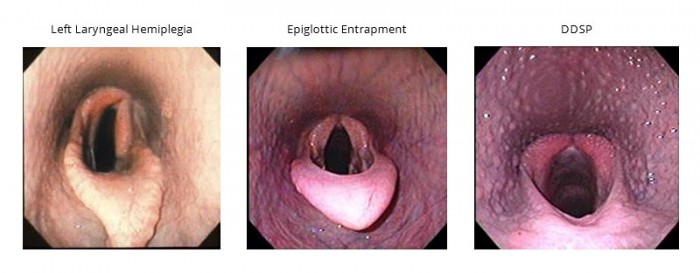
Diagnosis of upper respiratory tract diseases in sporthorses
It is challenging to diagnose the right problem in sport horses with decreased athletic performance, since the symptoms can be very subtle. A lot of diseases can play a role in the poor performance horse and therefor extensive testing is needed. Respiratory diseases may be overseen, although this is very often the case in racehorses and a retrospective study of sport horses presented for poor performance identified respiratory disease disorders in 54 of 77 (70%) sport horses.
Horses with respiratory dysfunction most commonly involve; dorsal displacement of the soft palate, laryngeal hemiplegia or pharyngeal collapse.
Examination of the upper respiratory tract involves:
Historical information
Physical examination
- Palpation
Videoendoscopic examination
- At rest (“slap test”, manual occlusion of nostrils)
-> Identifying grade IV lyryngeal hemiplegia - During exercise (treadmill)
- > Identifying grade II and III laryngeal hemiplegia and pharyngeal collapse and axial deviation of the arypicglottic folds
- > Evaluation after laryngoplasty (surgery)
Radiographic evaluation
- Sinus or nasal passage abnormalities
Other methods
- Undirectional microphone
- Breathing flow-volume loops
- Upper airway pressure measurements
- Airflow mechanics
> From: Davidson et al., Vet Clin Equine 19 (2003) Elsevier Science (USA). All rights reserved to 51-62. Click here for the online summary.


